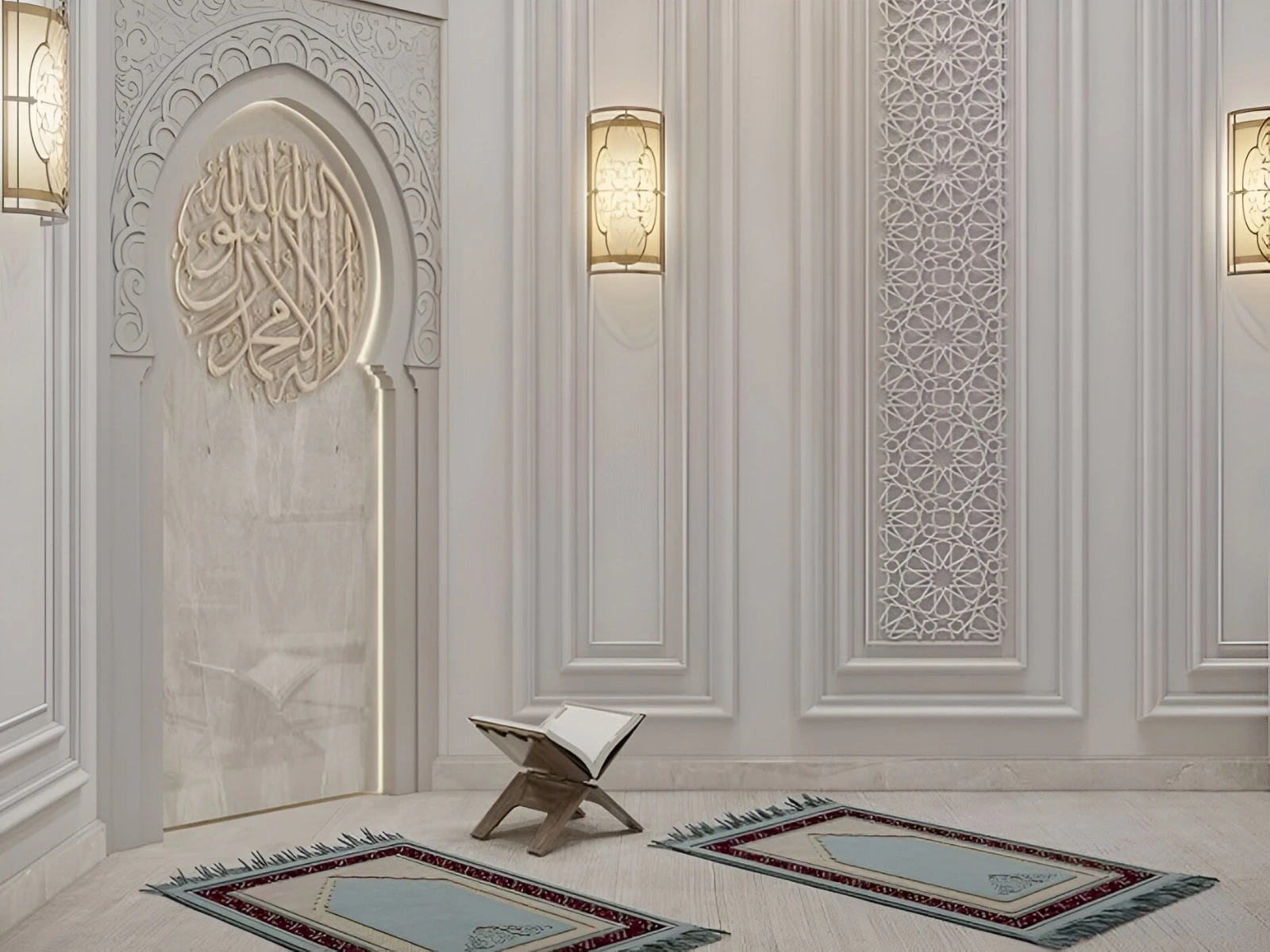Designing the perfect prayer room in your home is an opportunity to create a peaceful, spiritual sanctuary where you can connect with your faith in comfort and serenity. The key to designing a prayer room is to focus on functionality, ambiance, and spirituality, ensuring it fosters a calm and focused environment for prayer and reflection. The first consideration is choosing the right location. Ideally, the prayer room should be in a quiet, private area of the home where you won’t be easily disturbed. A corner of a room or a separate space with minimal foot traffic works best, as it helps maintain a peaceful and uninterrupted atmosphere. The room should also have ample natural light, as it creates a bright, uplifting environment, but avoid overly bright or direct light sources that might be distracting during prayer.
Next, pay attention to the layout and functionality. The room should be spacious enough to allow for comfortable movement during prayers, particularly for prostration. If possible, use a soft, comfortable rug or carpet to serve as the prayer mat, as this will provide comfort during long sessions of prayer. A clean, simple floor with minimal clutter is ideal, as it emphasizes humility and focus during prayer.
The direction of the qibla, the direction of the Kaaba in Mecca, is the most crucial element in the design of a prayer room. The room should be arranged so that the individual can face the qibla during prayer. This can be determined using a qibla compass or by using technology like a smartphone app to locate the direction of Mecca in your area. Align the furniture planning of the room ideally, to face the Qibla.
Acoustics in the Prayer Room
Acoustics play a crucial role in creating a serene and focused environment in your prayer room. The sound quality in the space can significantly impact the atmosphere, either enhancing your experience or causing distractions. When designing a prayer room, it’s essential to consider how sound travels within the space and how to optimize it for peace and mindfulness. First, consider the overall layout of the room. A room with hard, reflective surfaces such as bare walls and floors can amplify noise, causing unwanted echoes that disrupt concentration during prayer or meditation. To counteract this, use soft, absorbent materials in the room’s furnishings. Adding fabric elements like thick curtains, upholstered furniture, or plush cushions can help absorb sound and minimize reverberation, creating a softer, more soothing auditory environment.
If you plan to play recordings of Quran recitations or religious music, the room’s acoustics become even more important. Too much echo can distort the sound and make it harder to focus on the words. Soft textiles, such as rugs, carpets, or even wall hangings, can help moderate the sound, creating a more balanced auditory experience. Additionally, a well-placed bookshelf filled with religious texts or even decorative items can serve to dampen the sound and absorb excess noise.
The shape of the room also influences acoustics. Rooms with high ceilings or large, open spaces can amplify sound, making it more challenging to maintain a quiet and tranquil atmosphere. If your prayer room has high ceilings, consider using large curtains or fabric wall panels to help control the sound. In smaller rooms, sound might bounce off walls more sharply, so be mindful of how furniture is arranged to avoid overly direct sound reflections.
Finally, consider the use of a sound system or audio devices carefully. If you enjoy listening to recitations or calming background sounds, choose high-quality speakers that provide clear, balanced sound. Place them in corners or against walls to avoid sound distortion and ensure that the volume is set to a comfortable level that doesn’t overpower the room’s natural tranquility.
The color scheme and overall aesthetic of the room should promote calmness and concentration. Soft, neutral tones such as whites, beiges, and pastels are ideal, as they create a serene environment. Avoid bright or overwhelming colors, as they may distract from the spiritual focus. Adding elements of natural textures, like wood, stone, or woven fabrics, can enhance the sense of peace and connection to nature, which is often symbolic in spiritual practices. In terms of decoration, less is more. A few simple but meaningful items such as a framed verse from the Quran, a small vase with fresh flowers, or an elegant lamp can add beauty to the space without cluttering it. Keep decorations simple and symbolic, ensuring they enhance the atmosphere rather than distract from the purpose of the room.
Storage is another important consideration. Having a dedicated space for storing prayer mats, Quran copies, and other religious items will keep the room organized and clean. A small shelf or cabinet can provide the necessary storage while maintaining a minimalist aesthetic.
Overall, designing the perfect prayer room is about creating a dedicated space that encourages peace, mindfulness, and a deep connection to spirituality. By focusing on simplicity, tranquility, and functionality, you can craft a space that is both a retreat from the world and a sacred place to deepen your faith.
For further design updates please visit our YouTube Channel :


